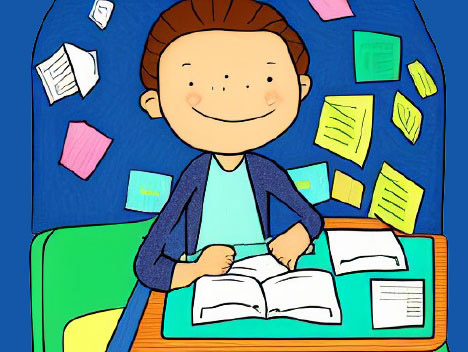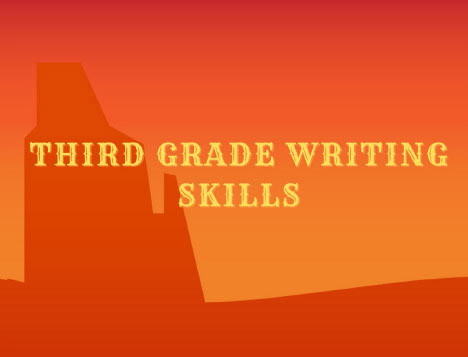What To Expect From Your Third Grader in Writing
Writing Content Skills in 3rd Grade
Our students should have a broad scope of writing skills to be successful in any situation. For example, third-graders should be able to write after going through the proper steps and on command. This means third-graders prewrite, write a draft, confer with their peers and the teacher, edit their work, revise as needed, and publish their final piece.
Students should be able to move through the different steps independently, although they may struggle somewhat with editing and revising. The teacher/parent should provide scaffolding during conferences focusing less on correcting mechanics and spelling and more on content and organization.
For example, when I work on writing with students, I focus on things like paragraph breaks, writing for the audience, making sure the text flows well and clarifying anything that might not be clear to readers. This process usually takes several days or maybe even a week.
Writing on Demand
However, writing on demand is different than other types of writing. This type of writing is usually timed and very specific. It might be a response to a text, personal experience, or a particular question or set of questions. For example, students might read two stories and compare the texts in various ways.
By third Grade, students should be able to write a paragraph. This includes being comfortable with end marks and having a solid subject/predicate sentence structure. They should also slowly become more familiar with commas, apostrophes, and quotation marks. On top of all this grammatical knowledge, they should be using conventional spelling or at least have an understanding that the word they’ve written might not be spelled correctly.
For example, while editing their writing and other students’ work, they should be able to identify words that may not be spelled correctly. It’s also important for third graders to understand when to use uppercase letters. Every sentence must start with a capital letter and proper nouns, days of the week, and months of the year. By the end of third Grade, students should know how to capitalize holiday titles, etc.
Different Types of Writing
Third graders should be familiar with different types of writing, such as letters, persuasive essays, how-to writing, writing to inform, narrative or story writing, and poetry.
They should also be able to respond to the texts they read in many ways, such as by journaling about personal or intertextual connections, summarizing the text, or simply describing their favorite part of the essential fact.
Knowing The Audience
By third Grade, students should have a firm grasp on writing clearly and for their audience. They can do this by using more varied sentence structures and language.
Additionally, they should be adding detail to their narratives through the use of adjectives and descriptive sentences.
Proofreading and Correcting Mistakes
Students should be able to check over their work to make sure it makes sense. They can use graphic organizers and rubrics to help organize their thoughts. Finally, self-reflection through a rubric will allow them to assess their understanding of the material.
The Primary Focus on Third Grade Writing
There are many goals for writing instruction in third Grade. However, we will focus on just a few. First, teachers/parents should model writing frequently so students can see how it is done. Second, students should have time to write on their own. Third, there should be a balance between tasks that require students to write immediately and those that allow them to use the full writing process.

Modeling Writing
There are many different ways to model writing. Shared writing experiences and mini-lessons are two great ways to do this. In a shared writing experience, the teacher and students write together about a shared experience. This can happen any time, for example, after a field trip or during the morning message. Mini-lessons can happen during a shared writing experience, at the beginning of writing time, in small flexible groups, or during individual student conferences.
Mini-lessons are 10- to 15-minute lessons that teach skills related to writing. For example, model the steps in the writing process over several days. Start with a mini-lesson on determining what to write about, think aloud about different ideas, such as my dog, surfing, making cookies, autumn, and reading. Then have the student write these ideas down so he can refer back to them later and always have a topic at hand.
There are many reasons why students should write across the school day. They can describe their findings during science class, write a research report during social studies, or respond to a chapter they’re reading in a book.
Focus on Both Process Writing and On-Demand Writing
We also want to provide a balance between process writing and on-demand writing. Process writing (which often happens during a time block called Writers’ Workshop) should happen as often as possible for at least 30 minutes each day. On-demand writing assignments should be given every day.
There are many ways that you can vary on-demand writing and allow student choice. Some examples include buddy journals, writing-center tasks, and responses to literature. None of these types of writing need to happen at a specific time. Students can complete writing tasks while the teacher is helping other students or you are putting another load of laundry in the washer!
Third graders should be able to construct complete thoughts, use paragraph structure, and employ correct punctuation and capitalization by the end of the school year. They should be able to write for a particular audience while receiving assistance, utilize details and vivid language to entice the reader, and also write for a general audience with some scaffolding and help.
To help third-grade students achieve the goals outlined in the article, it is crucial for teachers and parents to model writing frequently. Additionally, students need time to write on their own, balancing tasks that require them to write immediately and those that allow them to use the entire writing process. Finally, various writing opportunities should be provided across the school day. This will give students the practice they need to improve their writing skills.
Thanks for taking the time to read this. I hope you’ve picked up some information and guidance for your third grader and are ready to have a great school year!
Don’t hesitate to reach out to me at:
Drkim@readingranch.com


